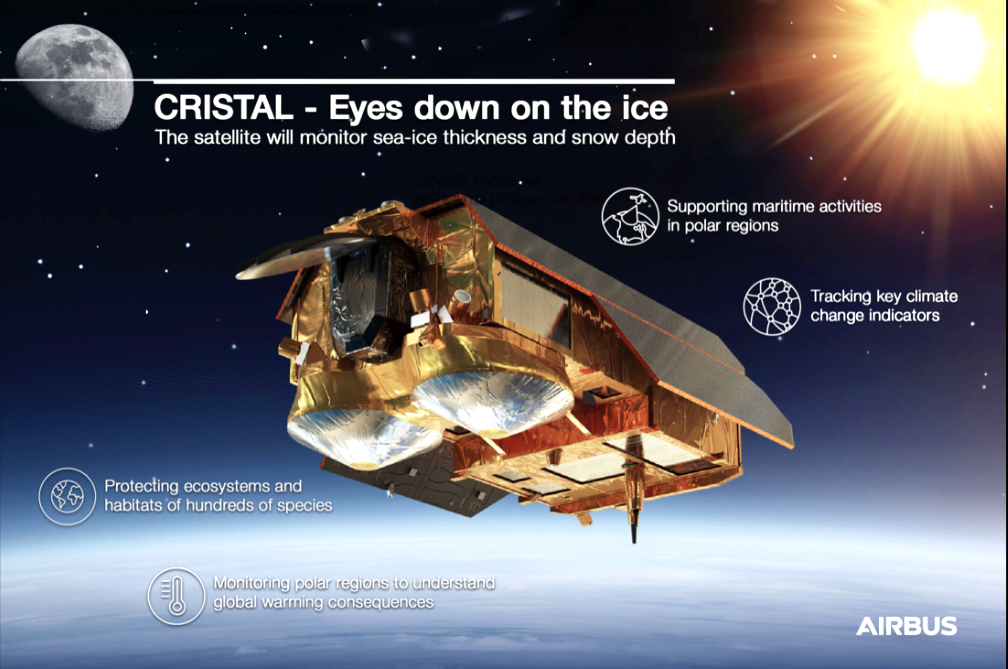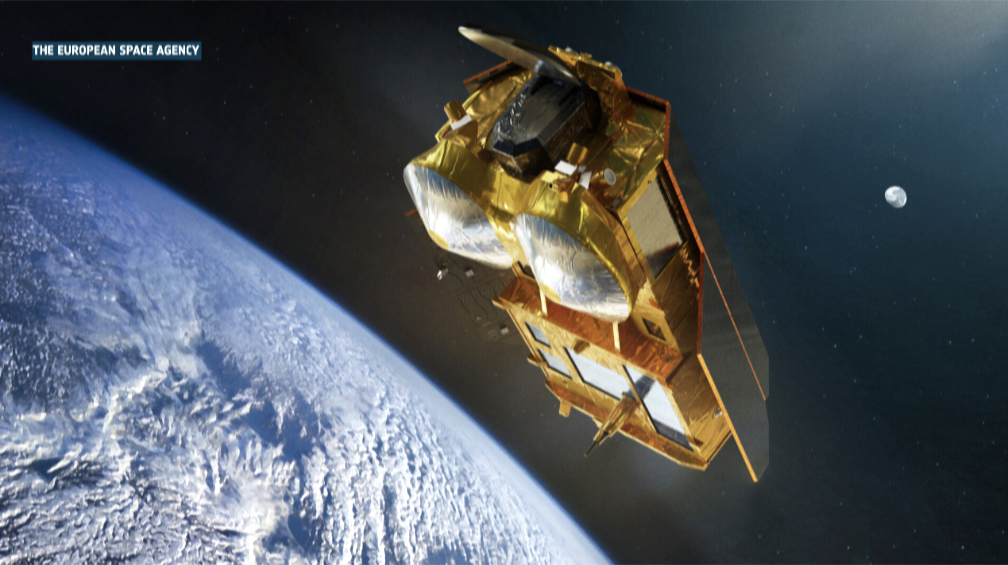
The Copernicus Polar Ice and Snow Topography Altimetry mission CRISTAL is clearly on track. Following an intensive review process, the European Space Agency (ESA) has confirmed that the preliminary design of the satellite meets all system requirements.

Artistic rendition of the ESA Copernicus CRISTAL mission. Image is courtesy of the ESA.
CRISTAL will carry an advanced, multi-frequency altimeter that will measure sea ice thickness and ice sheet elevations – key climate change indicators. The CRISTAL altimeter will, for the first time, measure snow coverage of the ice sheets which will improve data quality significantly compared to its predecessor, CryoSat-2. These data will support maritime operations in polar oceans and contribute to a better understanding of climate processes.

The Preliminary Design Review (PDR) was organized using a new, more collaborative format. As a first step, an extensive review by more than 60 ESA engineers of a comprehensive data package, established by more than 100 engineers led by Airbus, took place over four weeks. In a second step, the major findings were intensively discussed in an interactive way between senior level experts, both on ESA and Industry side, up to the successful completion of the review.

CRISTAL will also support applications related to coastal and inland waters and the observation of ocean topography. The mission will ensure the long-term continuation of radar altimetry ice elevation and topographic change records, following on from previous missions such as ESA’s Earth Explorer CryoSat, also developed by Airbus and working flawlessly for 12 years, well beyond its design lifetime. Monitoring the cryosphere is essential to fully assess, predict and adapt to climate variability and change.
The 1.7 ton spacecraft is based on a proven, robust, Airbus satellite design building on the heritage from Sentinel-6 and CryoSat. Six fixed and two deployable solar arrays – 18.6 m² in total – ensure enough power on CRISTAL´s drifting polar orbit at 699 km. above the Earth. The satellite’s on-board memory will be able to store as much as 4 terabits of science data at once, providing scientists with a wealth of information during its 7.5 year lifetime.
The Airbus Defence and Space site in Friedrichshafen (Germany) is heading an industrial consortium involving companies from 19 countries to deliver the project, including Thales Alenia Space, to provide the IRIS Interferometric Radar Altimeter. Following the successful PDR, the CRISTAL project is now on track for the Critical Design Review (CDR), scheduled for May of 2024. The satellite platform and instrument will then be integrated and tested in the new, highly digitized, integration center at Airbus in Friedrichshafen. CRISTAL is currently scheduled for launch from the European spaceport in Kourou in 2027.
The Copernicus Sentinels are a fleet of dedicated EU-owned satellites, designed to deliver the wealth of data and imagery that are central to the European Union’s Copernicus environmental programme. The European Commission leads and coordinates this programme, to improve the management of the environment, safeguarding lives every day. The European Space Agency (ESA) is in charge of the space component, responsible for developing the family of Copernicus Sentinel satellites on behalf of the European Union and ensuring the flow of data for the Copernicus services, while the operations of the Copernicus Sentinels have been entrusted to ESA and EUMETSAT, the European Organisation for the Exploitation of Meteorological Satellites. Six new missions were selected in 2020 to join the fleet of Copernicus Sentinels and expand the current capabilities. Airbus is a key industrial contributor by developing and manufacturing satellites, instruments and components as well as providing related services.
